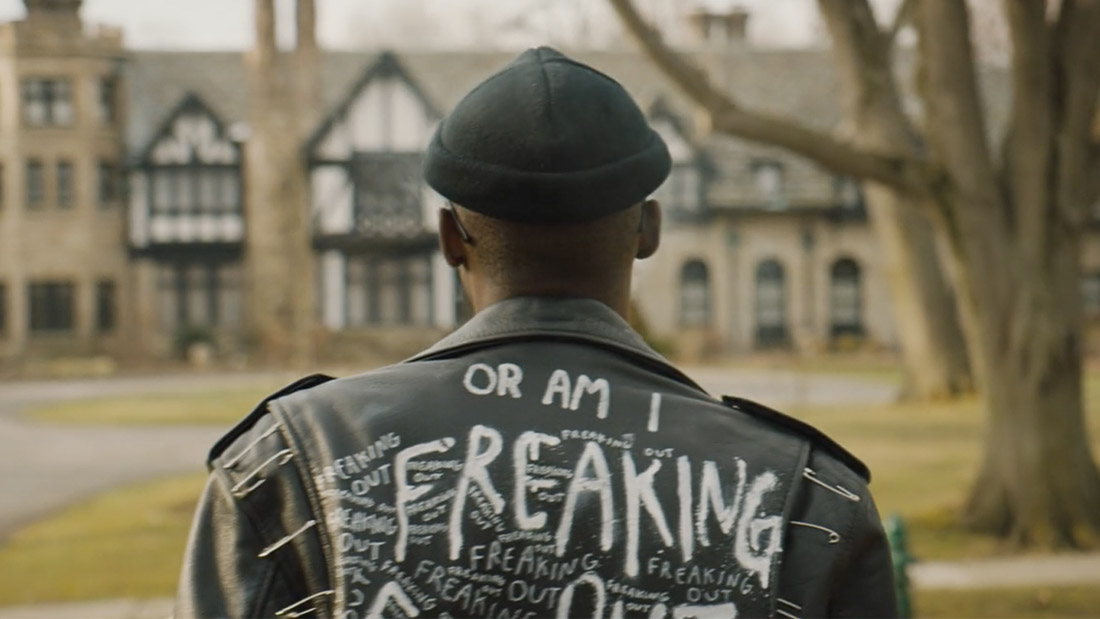PARK CITY – There is a moment in Rashid Johnson’s “Native Son” where unbeknownst to him, a woman admires Big (Ashton Sanders) and says when they made him, “they broke the mold.” It’s a pointed moment, but also odd considering how it feels completely disingenuous to the character Sanders, Johnson and screenwriter Suzan-Lori Parks have brought to the big screen. Moreover, it’s not the only time an awkward choice distracts from the often compelling drama playing out in the latest adaption of Richard Wright‘s seminal 1940 novel.
READ MORE: 18 Sundance Premieres We’re Already Curious About
Bigger, or Big as he’s known, is a young black man in modern day Chicago who is balancing a job as a bike messenger while trying to convince his girlfriend Bess (Kiki Layne, a strong follow up to her debut in “If Beale Street Could Talk”), that he truly cares for her. His mother Trudy (Sanaa Lathan, much needed) isn’t able to give her three children a prosperous life wants him to strive for more. When Trudy’s lawyer boyfriend (David Alan Grier, solid) proposes he interview for a job with one his clients, Big is skeptical but takes him up on the offer.
READ MORE: Sundance 2019 Film Festival Preview: 25 Must-See Films
Before he knows it, Big is officially the diver for the wealthy real estate developer Henry Dalton (Bill Camp), his blind wife (Elizabeth Marvel) and their college-age daughter Mary (Margaret Qualley, scene-stealing). To say Mary is slightly off-kilter is probably an understatement. Despite her jarring flirtation, she recruits Big to drive her and her organizer boyfriend Jan (Nick Robinson, almost all grown up) on a number of risky adventures including eating at a predominantly black restaurant in his neighborhood. One night Mary, Jan, Big, and Besse attend a party where Molly, alcohol and passions spin things out of control. If you’ve read Wright’s novel or seen any of the theatrical or stage adaptations what happens won’t surprise you, but if you haven’t it’s something of a shock (there were audible gasps in the theater during its Sundance Film Festival premiere).
READ MORE: The 100 Most Anticipated Films Of 2019
Johnson has already made his mark as an acclaimed artist in a number of media while Parks was the first African-American woman to win the Pulitzer Prize for drama. Their collective adaptation of Wright’s original work keeps most of the structure intact, but makes some major changes in the story’s third act. Johnson and Parks obviously want to keep the novel’s still contemporary theme of society’s prejudicial judgment of African-Americans. In the almost 80 years since “Native Son” was first published a black man will still find himself presumed guilty of a crime instead of innocent. They throw some original twists to stir the pot, but their formation of Big’s character might be their biggest miscalculation in clearly conveying this theme.
READ MORE: The Most Anticipated Films By Female Filmmakers In 2019
In this 2019 version, Big is purposefully the antithesis of the young black male stereotype. He likes metal and classical music, he’s not a fan of hip-hop. He has green hair and wears punk-esque clothing. He won’t help his friend with a robbery because he thinks it’s basically a cliche. He’s almost an anarchist except he hates politics (go figure). In defining Big in this manner you can see how Johnson and Park hope to impart that no matter what cultural influences you chose, the system will be against you. The problem is despite his best efforts Sanders just can’t pull it off.
READ MORE: The 25 Best Films Of 2019 We’ve Already Seen
Sadly, the “Moonlight” star’s performance is a bit all over the place. He mostly portrays Big with this tough, mannered facade that you’d think even his on-screen friends would think is strange. There are moments that Sanders is so stylistically forced it seems like he’s tonally in a different film than the other actors acting beside him. Sanders simply can’t give Big genuine depth. It’s most apparent when he’s acting with Latham and Layne who are able to ground their characters with significantly less screentime. Were these Sanders’ choices? Were they Johnson’s? In either case, Sanders’ portrayal often doesn’t help the drama when it should.
While Johnson does suffer from making some of his artistic flourishes a little too on the nose (the messages on the back of Big’s trenchcoat keep changing, images of black political heroes in the walls of many scenes where you might not expect them) there is a good portion of the film where he displays eye-popping talent as a filmmaker. Again, you may know Wright’s book, but Johnson will keep you on the edge of your seat wondering what will happen next. For every scene that doesn’t work there is another that’s spellbinding. It’s gutsy and provocative and, frankly, that’s a compliment you can’t give many independent films these days. [B-]
Check out all our coverage from the 2019 Sundance Film Festival here.





